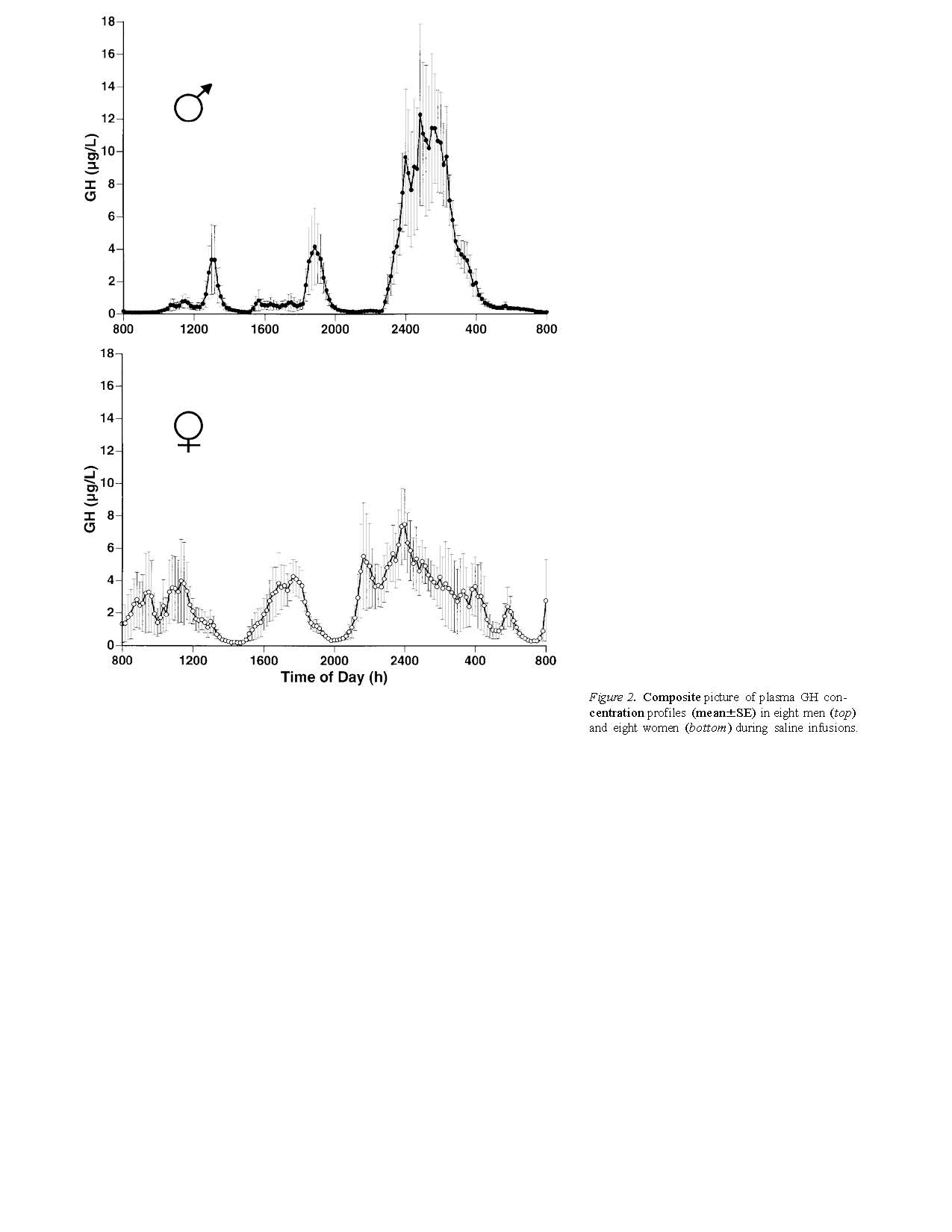Orderly has nothing to do with 'constancy'. It is saying that there is no 'order' to the GH pulses in women when compared to men. Men have a large nocturnal GH pulse with much smaller pulses throughout the day. Women, on the other hand, have smaller amplitude pulses but a higher interpulse level throughout the day. they use 'orderly' because it doesnt follow the large nocturnal pulse (aka spike) like shown in males. Basically, it doesnt have a pattern like males show, so it has less order to pulses, so it is 'less orderly'. This is the general consensus on GH pulses. So no, it doesnt contradict my original statement. I really dont have time to try and argue this, im in the midst of finals. If you want a better expanation, go read dats board on the pulsation topic.
I also do not have time to argue the definition of "constant". Clearly, you dont understand.
Debating with you is like banging my f*cking head against a wall whilst you "try to prove a point".
Go knock yourself out.
Or better, go give women advice on Winstrol and "how they cant take it becuase dont have DHT receptors".
If you go back to the 2nd article i posted and look at figure 2, it is showing exactly what i am saying. Ill post an image of that figure. Here is what it says in the text about it. And since its a full free text from pubmed, it should be accessible to everyone. I forgot to add this: The subjects recieved saline infusion.
 I've pointed out to flaws in your "studies", yet you seem to ignore them or think that being "GH deficient" and being given "IV GH" has no impact here.
I've pointed out to flaws in your "studies", yet you seem to ignore them or think that being "GH deficient" and being given "IV GH" has no impact here.
You dont think studies in healthy adult males and females are relevant and wrong.
Are you GH dificient and do you inject IV GH?
I've just hit another brick wall.
"The mean (6SE) GH concentrations for the
eight men and eight women are given in Fig. 2. The 24-h profiles
in men were characterized by the presence of a dominant
nocturnal pulse with much smaller pulses at other times of the
day. In contrast, GH secretion in women was more continuous,
with pulses of similar amplitude throughout the 24 h."
See above.
Well, since IGF1 is a negative feedback to GH release, and as shown below, exogenous IGF1 seems to block the negative feedbach for GH release. So without that feedback it still shows what i said.
Take your own advice and take the blinkers off. And women premenstral... seriously? thats pre-puberty, so not really applicable here, and same with the males used.. in pre-puberty. Infact they were Premature Infants...
At the end of that study, it acknowledges that aspect and provides a possible reason with not having the right response to negative feedback amount of somatostatin.
I'll come back to this later as I'm on my phone.
Again, your study has its flaws.
"premenstral" was a typo, I meant "premenomausal", but you didnt even spot that did you. The study I posted was on "premenomausal".
Did you actually take the time to read the study?
I saw what you are trying to say about estrogen and GH but the part you posted didnt really do much at all. I copied and pasted a section from the route of oestrogen delivery, which i think would be better understood by those here reading what is posted and w/o access to the full study.
I have more info. on this, again, I'm on my phone...
Basically saying that estrogen can diminish some of the negative feedback of GH regulation, resulting in increased GH release.
This was also suggested in another study, because it compared the menstrual cycle and associated estrogen levels. And later in the menstrual cycle, when estrogen increases the GH pulses become more frequent rather than a larger amplitude.








 Reply With Quote
Reply With Quote